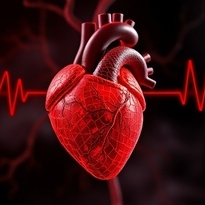Heart Disease,Symtoms & Causes,Blood Vessels,Cardiovascular
Section 1. [introduction] Heart disease remains one of the leading causes of death worldwide, affecting millions of individuals each year. Recognizing the importance of awareness and education, this blog post delves into the various forms of heart disease, its risk factors, symptoms, and preventive measures to help you lead a healthier life. What is Heart Disease? Heart disease is a range of conditions that affect the heart’s structure and function. It encompasses various issues, such as: Types of Heart Disease 1.Coronary Artery Disease (CAD): The most common form, caused by plaque buildup in the coronary arteries, which supply blood to the heart.2.Heart Attack This occurs when blood flow to a part of the heart is blocked, causing damage to the heart muscle.3.Heart Failure: A chronic condition in which the heart does not pump blood as effectively as it should, leading to fatigue and fluid buildup.4.Arrhythmias: Irregular heartbeats that can disrupt the heart’s ability to pump blood effectively.5.Valvular Heart Disease: A condition affecting the valves that control blood flow in and out of the heart. Risk Factors of Heart Disease Understanding the risk factors associated with heart disease is crucial for prevention. Some factors are non-modifiable, while others can be controlled: Non-Modifiable Risk Factors 1.Age : The risk increases as you get older.2.Gender : Men are generally at higher risk, although risk for women increases post-menopause.3.Family History : A family history of heart disease can increase your risk. Modifiable Risk Factors 1.Smoking : Tobacco use is a significant risk factor for heart disease. 2.Poor Diet : Diets high in saturated fats, trans fats, sodium, and cholesterol can lead to heart disease.3.Physical Inactivity : A sedentary lifestyle contributes to obesity and increased cholesterol levels.4.High Blood Pressure : Regular monitoring and management of blood pressure are essential.5.High Cholesterol : Keeping cholesterol levels in check is vital for heart health.6.Diabetes : Poorly managed diabetes raises the risk of heart disease. Symptoms of Heart Disease The symptoms of heart disease can vary widely but may include: – Chest pain or discomfort (angina)– Shortness of breath– Fatigue with activity– Palpitations (irregular heartbeats)– Swelling in the legs, ankles, or feet– Lightheadedness or dizziness If you experience any of these symptoms, particularly chest pain, seek medical help immediately. Prevention of Heart Disease While some risk factors are beyond our control, many lifestyle changes can significantly reduce the risk of heart disease: 1. Adopt a Heart-Healthy DietEmphasize fruits, vegetables, whole grains, and lean proteins while limiting saturated fats, added sugars, and sodium. 2. Stay Physically ActiveEngage in regular physical activity, aiming for at least 150 minutes of moderate aerobic exercise per week, such as walking, swimming, or cycling. 3. Quit SmokingSeek support to quit smoking, as it dramatically reduces the risk of heart disease. 4. Maintain a Healthy WeightAim for a healthy body weight. Losing as little as 5-10% of your body weight can have a positive impact on heart health. 5. Manage StressPractice stress-reduction techniques such as meditation, yoga, or deep-breathing exercises to improve overall well-being and heart health. 6. Regular Health Check-upsKeep up with regular doctor visits to monitor blood pressure, cholesterol levels, and blood sugar. Conclusion Heart disease poses a serious threat to public health, but understanding its risk factors and symptoms can empower individuals to take control of their heart health. By making informed lifestyle choices, we can significantly reduce the risk of heart disease and enhance quality of life. Remember, prevention is always the best medicine-start taking steps towards a healthier heart today!
